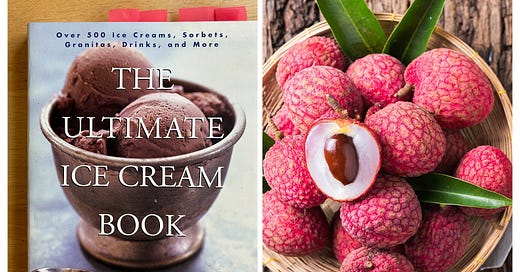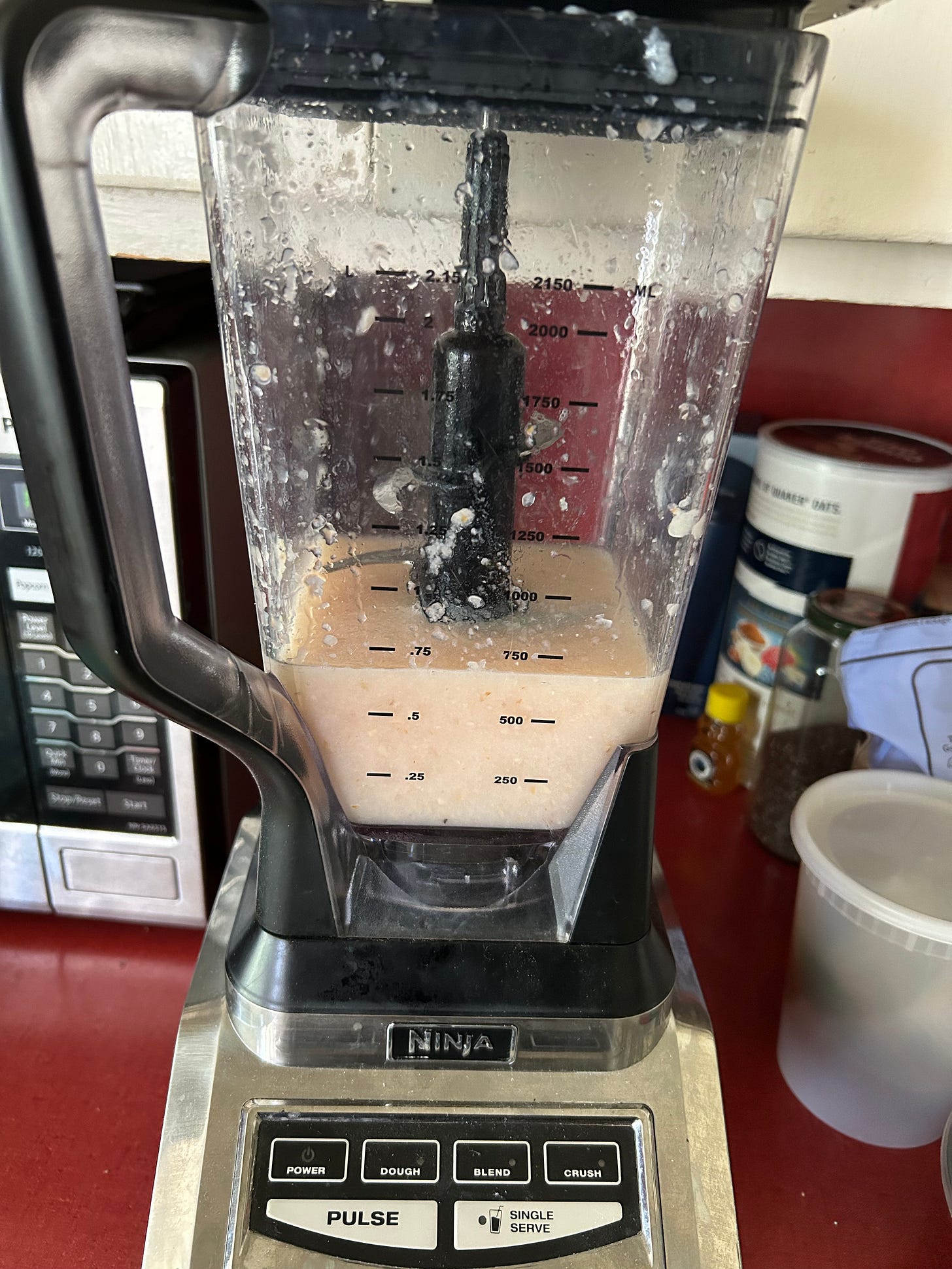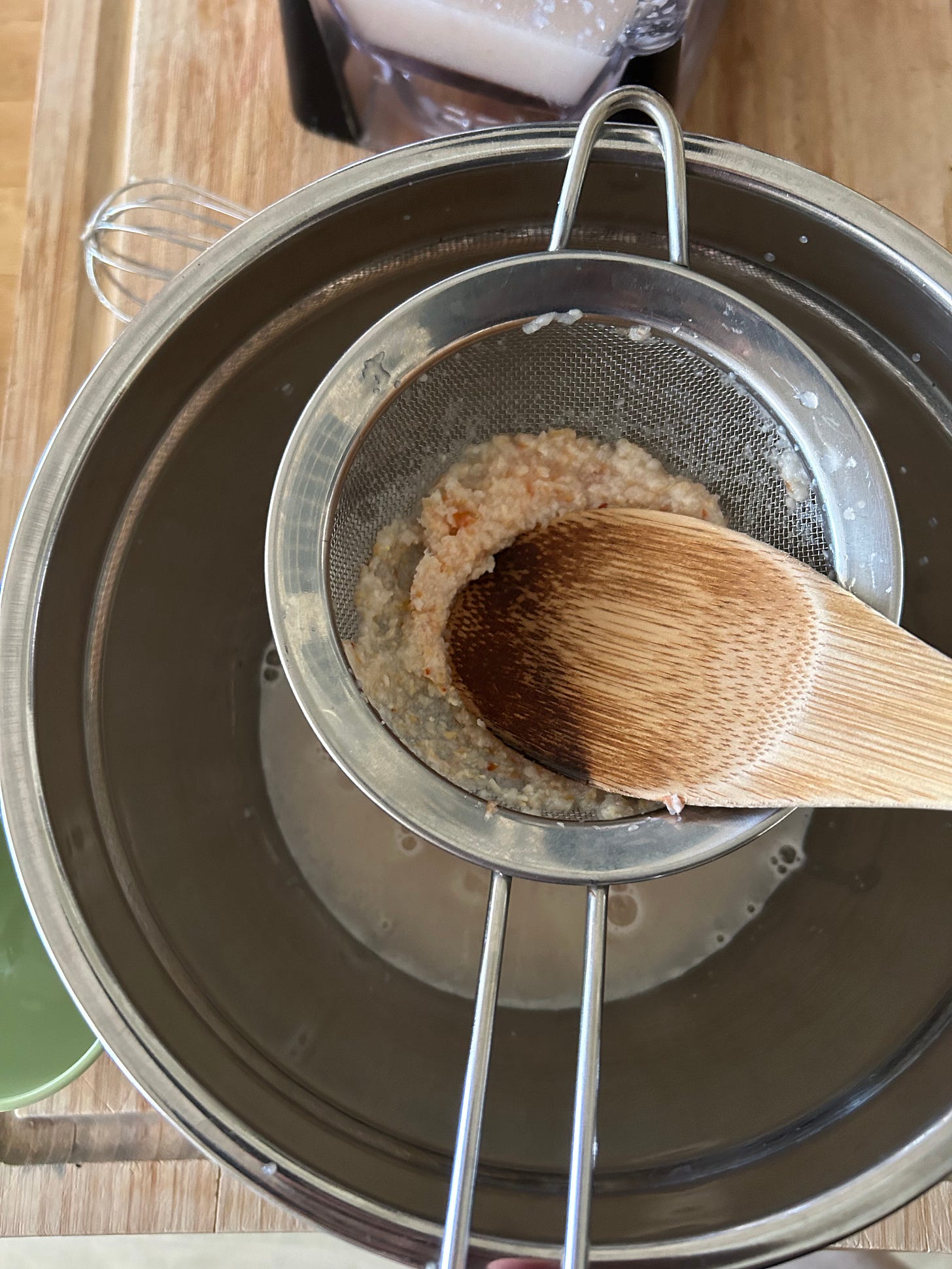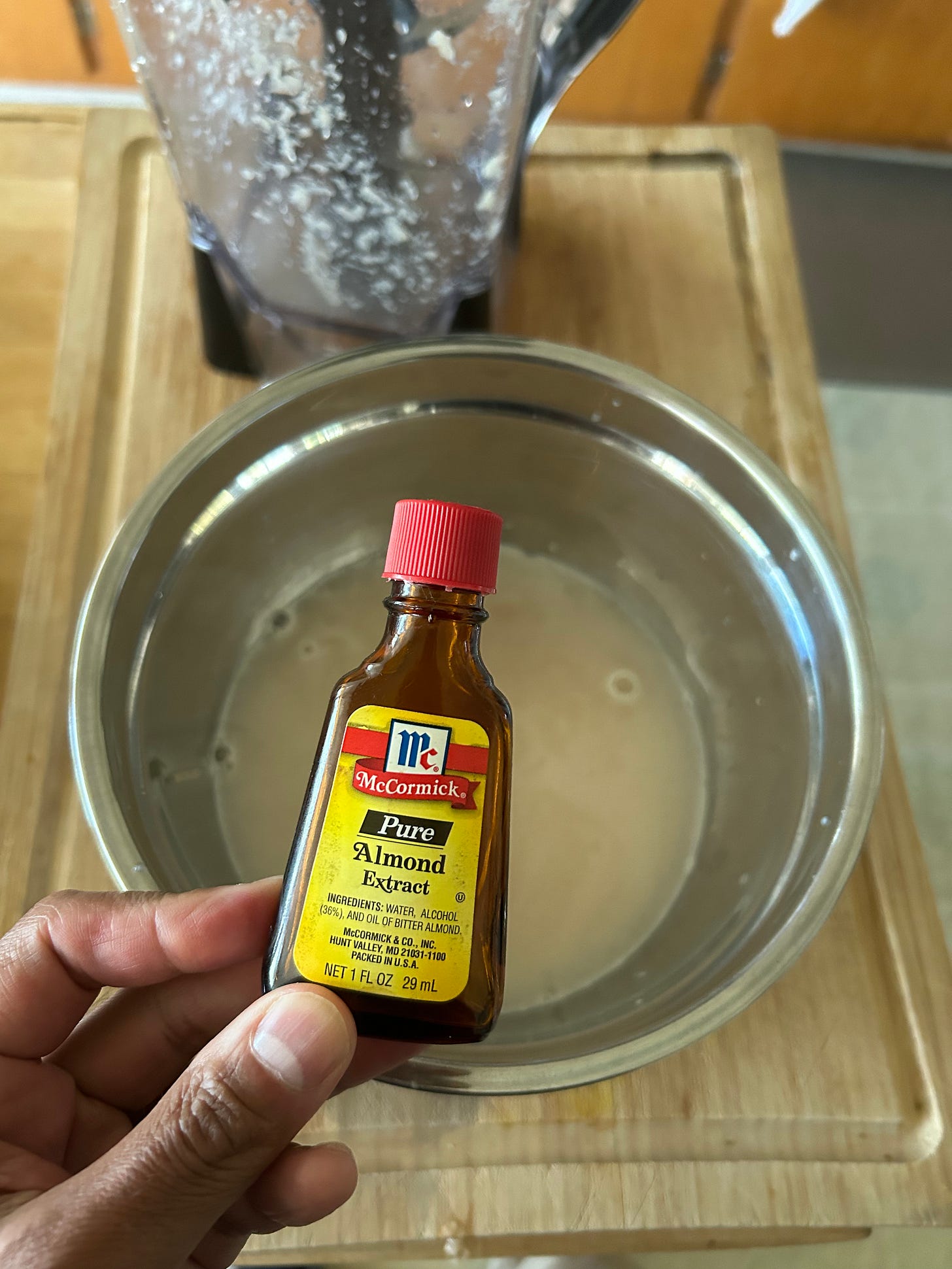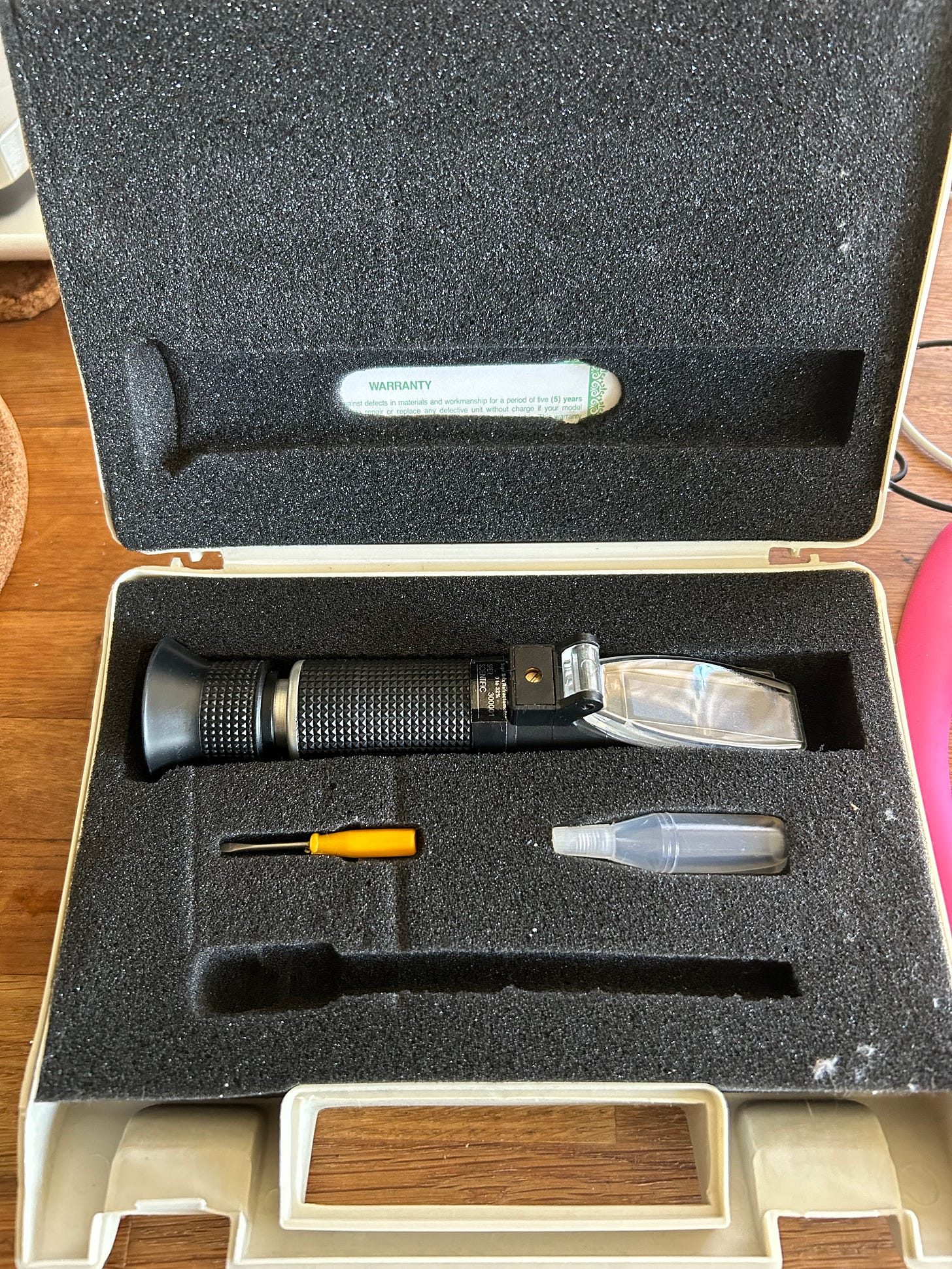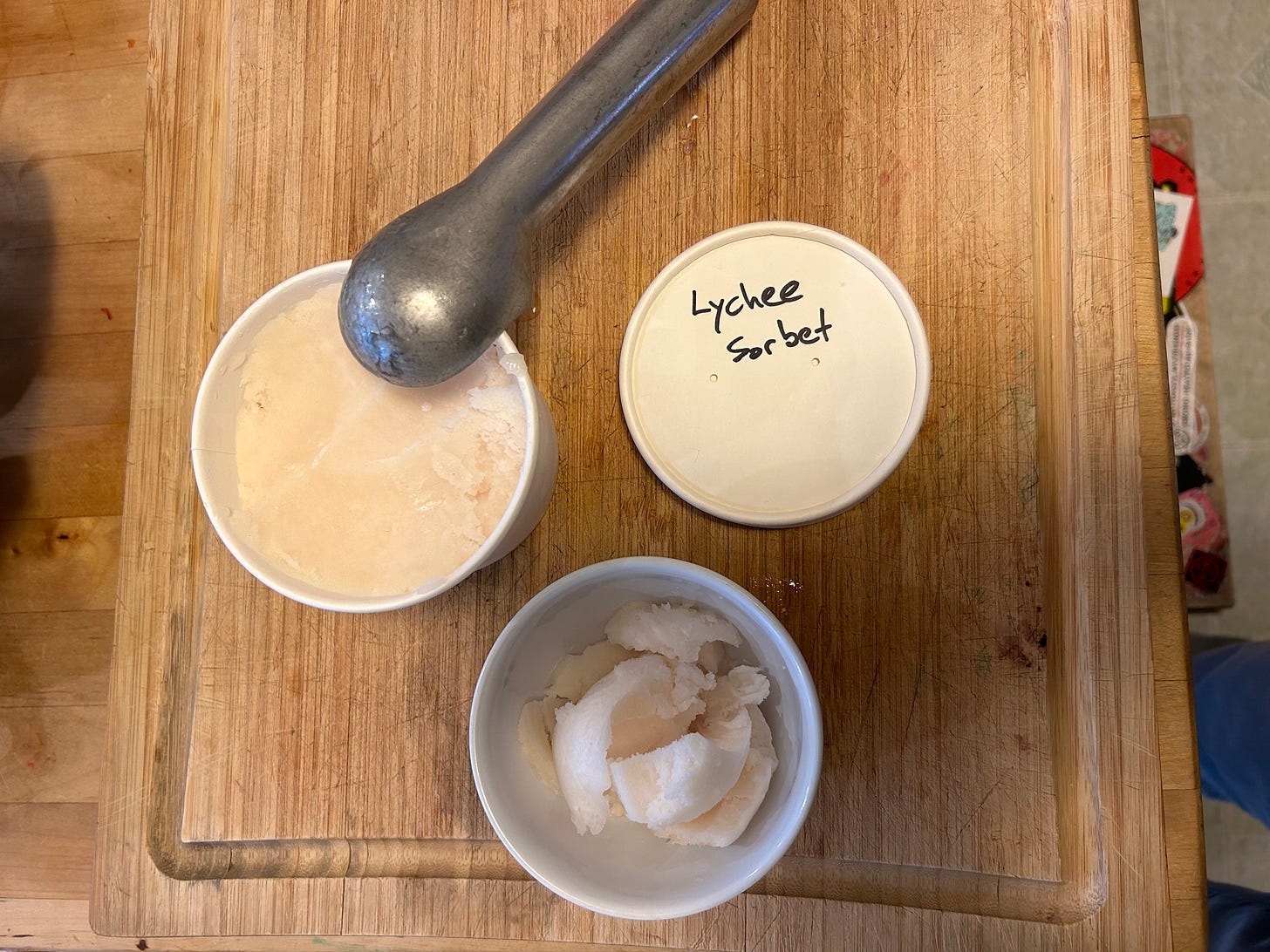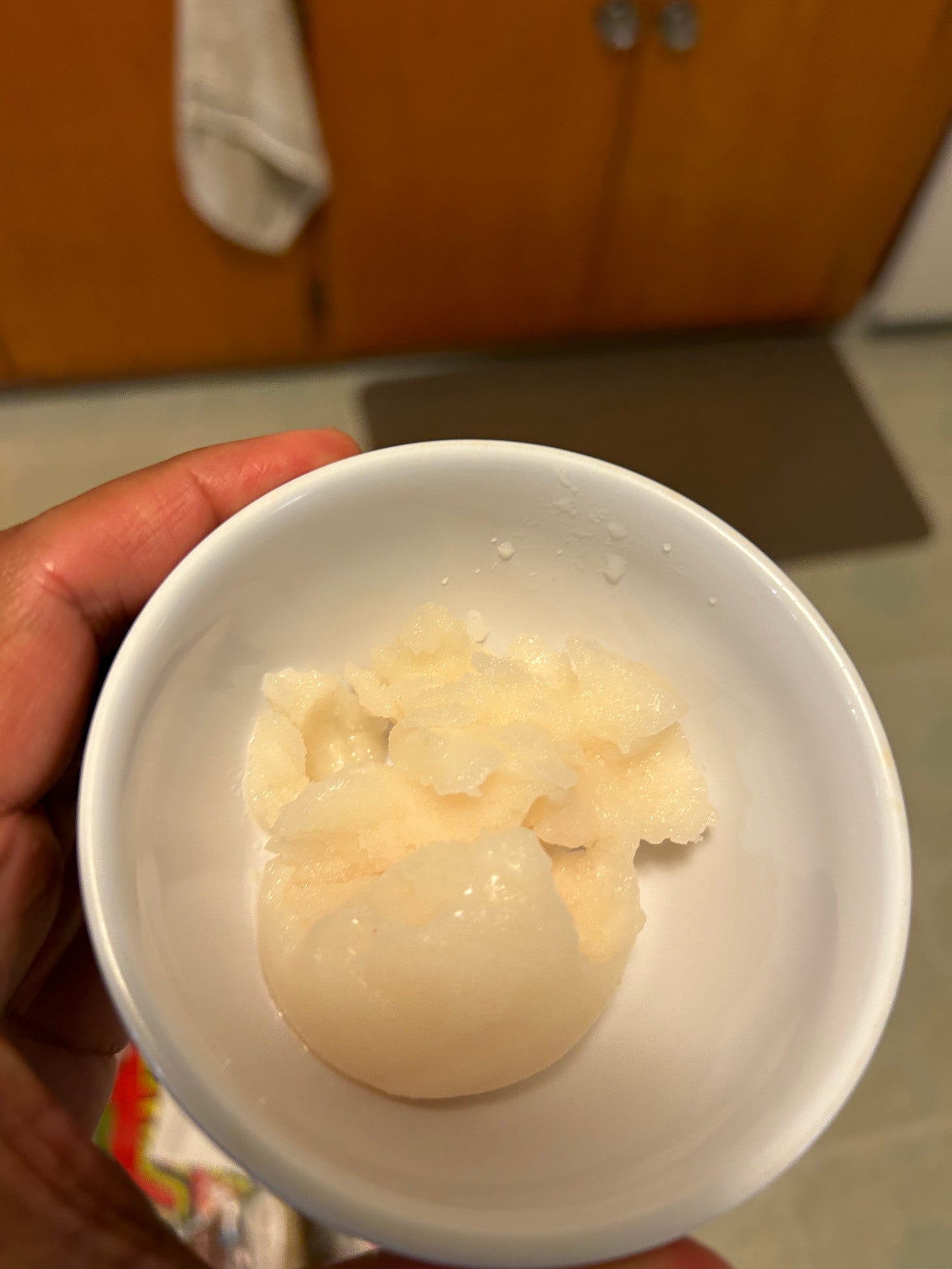Recipe Test: Lychee Sorbet
Lee-Chee? Lie-Chee? Who cares? It tastes delicious no matter how you say it.
Growing up, I never ate a lychee. They simply weren’t, to my knowledge, readily available on Long Island where I grew up. This was true of other fruits too—persimmon, durian, dragonfruit1—but lychee stands apart in my mind. When I first tasted one sometime in my late twenties, I was a bit awestruck. What is this? And how did I miss tasting one of these up until now?
Since then, lychees have become a semi-regular part of my diet (I say semi-regular because they only seem to be available at Costco or Ranch 99 during the late spring and summer). Sometimes our family will get two large clamshells from Costco and decimate them both in a single sitting. While I often dislike floral flavor profiles (rosewater desserts, for example, are decidedly not my fave), with lychees, I find the floral notes to be delicious and kind of addictive (similar to mangoes).
As a result, lychee has become one of my preferred dessert flavors. I often get it as a topping on shave ice. One of the best ice creams I ever tasted was a Lychee-Almond Milk ice cream from Wanderlust Creamery in Los Angeles.2 And I even discovered lychee sour candies on a recent family vacation to Hawai’i—those are delicious too!
But enough throat-clearing. What I’m trying to say is that I’m excited to try a new flavor this week (not vanilla), and I’m excited that flavor is lychee! Not only that, I’m chucking all the dairy out the window and going full sorbet! (the recipe is not vegan, but I made it vegan, as I’ll explain below.)
It’s time to make some delicious sorbet that all of our lactose-intolerant loved ones can enjoy! Onto the recipe!
Many moons ago, when I was living in Jackson Heights and was just starting out making ice cream, I made a lychee sorbet using a recipe from Bruce Weinstein’s, The Ultimate Ice Cream book—one of only two ice cream cookbooks I own. Sorbet recipes are usually pretty simple: fruit, sugar, and water. Most of Weinstein’s recipes follow this general formula, but this one has a slight twist:
As you can see, he calls for using two egg whites, with the resulting “meringue” acting as a stabilizer (I assume). But I decided to skip using them. Just didn’t seem necessary, and other sorbet recipes in the book don’t use egg whites. So the final ingredient list was this:
You start by draining the lychees and dumping them in a blender, along with 1/2 cup of the drained syrup:
Blend those lychees!
Then strain them through a sieve. I took Weinstein’s advice and used a whisk and a wooden spoon.

Once the lychees have been pureed and strained, you make 2x simple syrup with 1/2 cup of sugar and 1/4 of water. I didn’t boil the mixture since I wasn’t trying to temper any eggs. I just heated it until the sugar dissolved and then poured it into the mix.
The last thing I did was go slightly off-script:
A quick backstory: I was in Barnes & Noble the other day perusing through The World of Ice Cream, the new ice cream cookbook from Adrienne Borlongan, the founder of above mentioned Wanderlust Creamery3 One of the things she mentions in the book is that lychee and almond are flavors that pair very well together. So I figured, why not try it? I added a little less than a 1/4 tsp.
One last little step: I busted out a piece of kitchen equipment I haven’t used in quite some time: a refractometer! My wife got me this nerdy contraption when I first got into making ice cream/sorbet.
To answer your first question: a refractometer is used to measure the water content of a particular liquid. In his rundown of making sorbet, Max Falkowitz explains it this way:
Refractometers can measure sugar concentration down to the percentage point (by weight), and once you know how sweet your starting fruit juice or purée is, you can start adding sugar until you hit your magic number, a sugar concentration between 20% and 30%.
- Max Falkowitz, “The Science of the Best Sorbet”
Having the right sugar concentration is important for making sure your sorbet is scoopable, and not a brick of ice requiring a windshield scraper.
Refractometers provide important data, and are relatively inexpensive. But perhaps the best thing is that using one is quite simple.
…and then look into the eyepiece and see the results. For obvious reasons, I was unable to take a photo of myself looking into the refractometer. But I can tell you that the sugar content was about 28%, which is the perfect amount.
I let the mix sit in the fridge for about 6 hours before churning:
The sorbet was much softer than the video might suggest. It was basically done at the point I took the video.
So how did it taste?
Right out of the machine, I was definitely getting the almond flavor. It was also very sweet; not overly so, but I was left wondering if it veered into being cloying. My son tasted it too, and he really liked the almond notes. My daughter said it was good, but I should use less almond extract!
When we tried it the next day, I no longer thought it was overly sweet. Lychees are naturally quite sweet, so I thought the sweetness level was just right for a lychee sorbet. Same thing with the almond extract flavor. I could taste the almond, but it didn’t overpower the lychee flavor; it complemented it. The wife and son concurred. My daughter said she liked the almond flavor but suggested I should use less next time. Lastly, the consistency / texture of the sorbet was smooth and easy to eat; not at all icy.
That said, it didn’t scoop all that cleanly when taken straight out of the freezer…as the picture here shows:
As you can see in the bottom, it came out a bit on the crusty / flaky side. Sure, the texture was great when eating it. I just wish I got the perfect scoopable texture. Perhaps I should have let the sorbet soften a bit. (Update: I let it soften before scooping some for my son, and it scooped better, but still not perfect…maybe I should have used those egg whites.)
Final thoughts: at the risk of becoming that guy who says, “This was the best meal I’ve ever had!” after every single meal (and about my own handiwork no less!) I think this one is a winner. The almond extract really does add something nice. And the overall lychee flavor and texture is great. Not to mention that it’s breeze to make. And there are lots of variations beyond almond extract: add lime juice and lime zest, add some coconut milk and lime zest, maybe use almond milk instead of water and syrup, etc. The bottom line is that Lychees are delicious every which way: fresh, canned, sorbet-ed, you name it. And so I highly recommend making this.
Next week: A request from my daughter! Salted Caramel ice cream. Got a request of your own? Email me, or leave a comment below.
Until then, have a great Labor Day weekend!
I did eat a lot of mangoes, which we would often get from Jackson Heights. So it’s probably more accurate to say lychees were available to me—had I gone to an Asian grocery store—but they were not on my family’s cultural food radar.
My daughter ordered it. I got a Mango and Sticky Rice flavor that was outstanding in its own right. But she let me have a few bites of hers, and that made me regret my own ordering decision.
Writing about Wanderlust also makes me want to write a post about the now-shuttered East Hollywood Scoops, one of my favorite ice cream shops of all time. Maybe another day…
I did a quick skim while at B&N, and it seems excellent. I’m looking forward to purchasing a copy!

